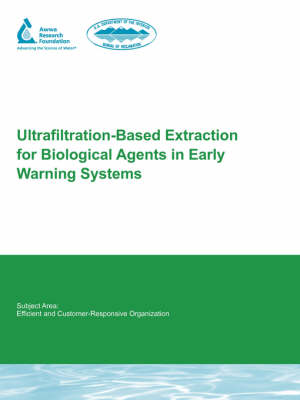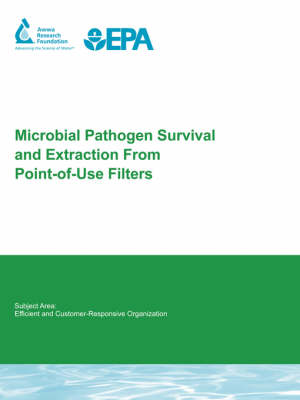Water Research Foundation Report
2 total works
Ultrafiltration-Based Extraction for Biological Agents in Early Warning Systems
by Kevin H. Oshima and G. Smith
Published 31 May 2007
Recent global events have highlighted the vulnerability of drinking water resources to accidental and intentional contamination with bio-threat agents. To insure the safety of drinking water, source water and distribution systems must be monitored for the presence of waterborne pathogens. Comprehensive monitoring of drinking water for these pathogens requires a considerable concentration step that must effectively consolidate viruses, bacteria, and protozoa from large volumes of water. Sample preconcentration of pathogens in tap water prior to the use of analytical tools for their identification has been an ongoing challenge in monitoring waterborne pathogens. The challenge is particularly large for detecting the intentional introduction of bio-threat agents.
This research developed methods that could be implemented to allow for the more rapid preconcentration of waterborne pathogens. The method(s) have applications for biothreat agent response but also for general monitoring of microbial water quality. The method has been shown to be robust enough to accommodate other types of water samples in addition to tap water.
This research developed methods that could be implemented to allow for the more rapid preconcentration of waterborne pathogens. The method(s) have applications for biothreat agent response but also for general monitoring of microbial water quality. The method has been shown to be robust enough to accommodate other types of water samples in addition to tap water.
Microbial Pathogen Survival and Extraction from Point-of-Use Filters
by Geoffrey B Smith and Kevin H. Oshima
Published 31 July 2007
The U.S. drinking water supply remains a vulnerable target for potential bioagent release and there is a need to identify the origin and extent of a bioagent release should it occur. In the aftermath of a release, it will prove difficult to retroactively sample enough of our water supply to identify release origin. Previous research reported that household water filters retain microbes, so it was hypothesized that filters could be extracted to identify bioagents.
A national drinking water survey was modified to obtain information on the most commonly used household water filters. Based on the survey results, faucet mounted filters manufactured by PUR and Brita were chosen for microbial extraction studies. Based on microbial sorption and extraction tests using activated carbon and individual filter units, a microbial extraction method was developed. The extent to which new and used filters retained viral and bacterial agents was determined, and percent extraction efficiencies of representative bioagents were reported. A tap water manifold was used to expose filters to realistic water usage patterns, and mock-release experiments were performed in which microbial agents were released into the water supply. Filters were extracted five days after being challenged with bioagents and the effect of storing filters at 4 DegreesC was documented.
A national drinking water survey was modified to obtain information on the most commonly used household water filters. Based on the survey results, faucet mounted filters manufactured by PUR and Brita were chosen for microbial extraction studies. Based on microbial sorption and extraction tests using activated carbon and individual filter units, a microbial extraction method was developed. The extent to which new and used filters retained viral and bacterial agents was determined, and percent extraction efficiencies of representative bioagents were reported. A tap water manifold was used to expose filters to realistic water usage patterns, and mock-release experiments were performed in which microbial agents were released into the water supply. Filters were extracted five days after being challenged with bioagents and the effect of storing filters at 4 DegreesC was documented.

